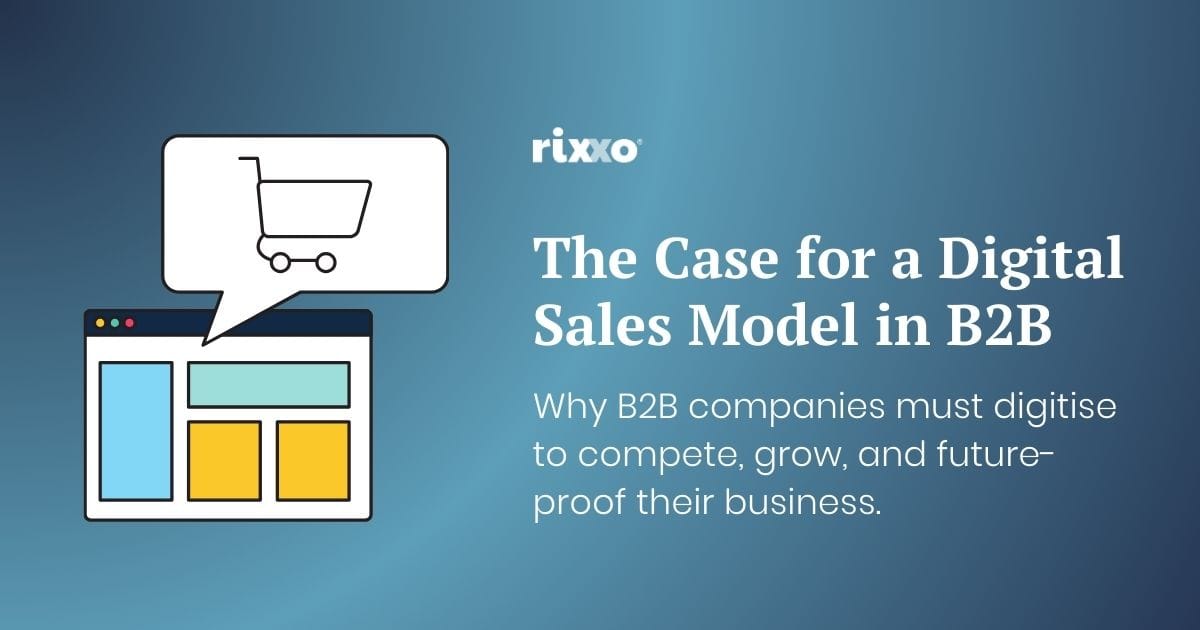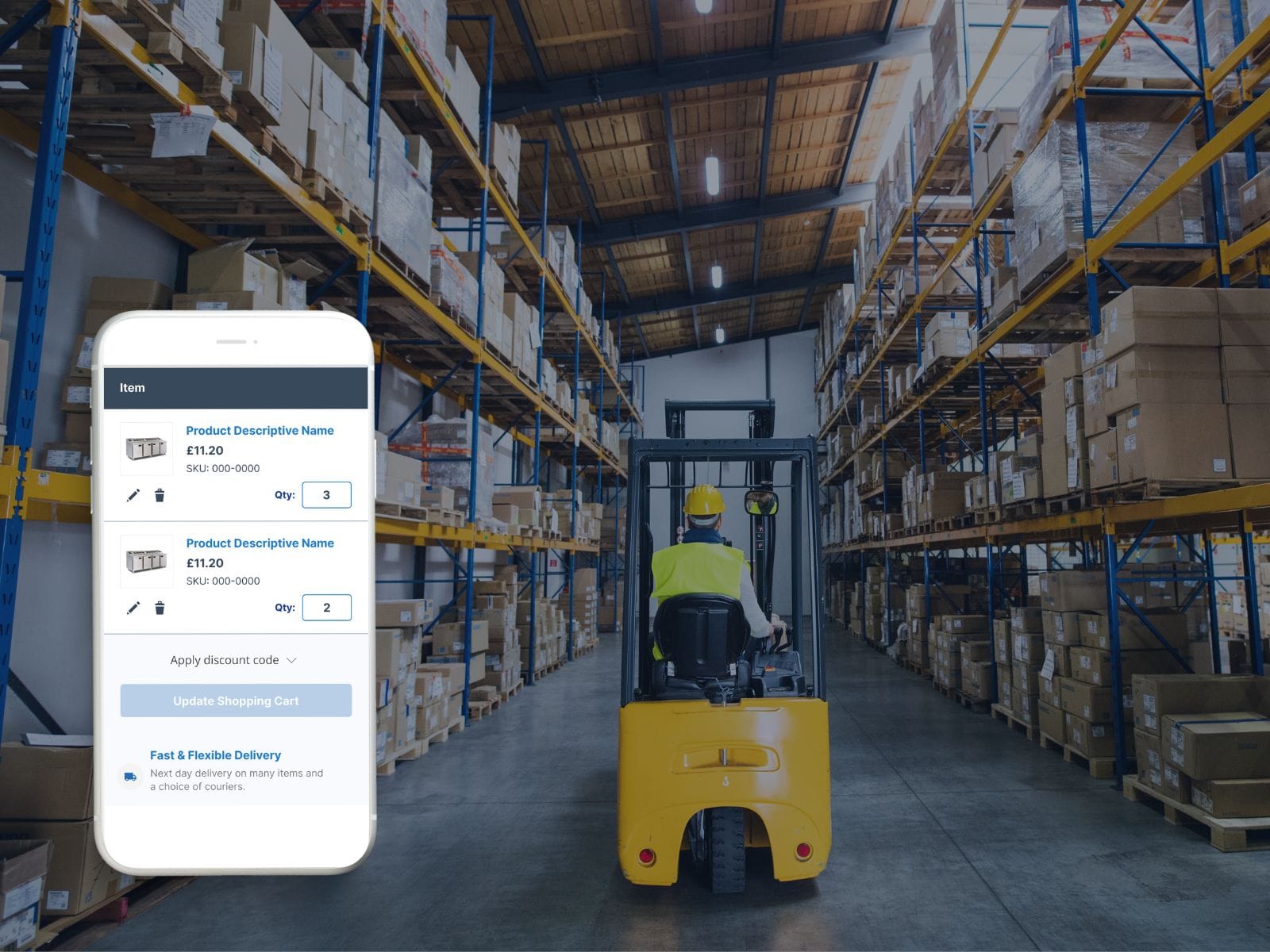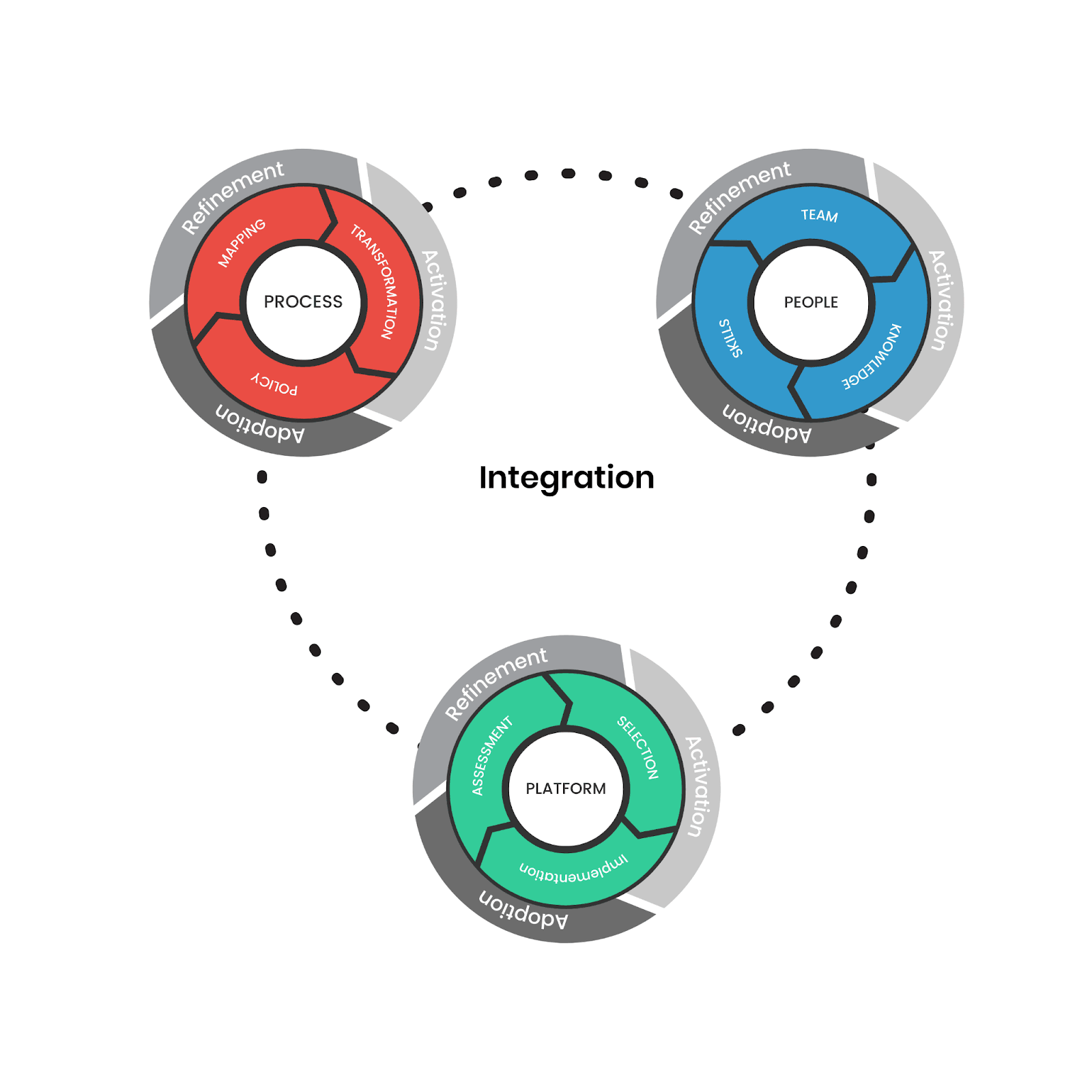The Case for a Digital Sales Model in B2B: How to Future-proof Your Business

During a recent leadership meeting at Rixxo, a leading B2B eCommerce agency, our team reviewed a highly profitable B2B company with annual profits of £3.5M. Yet, despite these impressive figures, their website is outdated and challenging to navigate—a relic of a bygone era.
Some may argue that if their business is thriving, there’s no pressing need for change. But can companies afford to rely on legacy systems as competition, customer expectations, and digital capabilities evolve?
I know this struggle well from my experience as a B2B sales rep years ago. Back then, placing an order was a laborious process: faxes came in, phones rang off the hook, and orders had to be manually entered, often multiple times. Every day was spent managing chaos.
It took a team of over 20 people to manage what a digital platform could now handle easily. Every single error cost us time, money, and customer trust.
Anyone who knows me will hear me say this often: “B2B relationships will always be human. But the admin belongs in the portal.“
Unsurprisingly, the company has since digitised and reduced overheads. But I don’t believe that was their sole motivation, efficiency and survival in a changing market were equally important.
Today, a poor digital presence is more than a missed opportunity; it’s a growing liability. With customer demands shifting rapidly, B2B companies that haven’t yet embraced digital sales are falling behind, whether they know it or not.
This article explores why transitioning to a modern digital platform is critical for long-term growth, efficiency, and competitive edge—and why the time to act is now.
The case for digital transformation
Back to that question: Why should a profitable company invest in digital transformation? If the business is already performing well, is it worth the expense?
The reality is that outdated websites and manual systems are unsustainable. Here’s why:
- Legacy systems are costly and risky
Many legacy websites and platforms were built over a decade ago, often on insecure code that’s difficult and expensive to maintain. Waiting to act means bearing these rising costs while dealing with frequent security concerns. Making the shift now allows companies to reframe this as an investment from a position of strength, rather than a desperate last-minute scramble. - Customer expectations are changing
Today’s B2B customers expect self-service options that let them control their purchasing on their terms—whether from a desk, a mobile device, or across time zones. While executives may prefer to network over lunch, purchasing managers and users prioritise efficiency and convenience. If one company fails to meet these demands, rest assured a competitor will. - Competitors are gaining ground
As older systems grow more expensive to maintain, competitors are adopting newer, faster platforms that improve their service and responsiveness. Standing still isn’t neutral; it’s falling behind. - Efficiency matters more than ever
Maintaining an old system can feel like keeping a classic car: charming and nostalgic but inefficient, costly and environmentally questionable. A modern digital platform reduces labour-intensive tasks, minimises errors, and trims costs across the board, freeing up your team to focus on strategic work rather than routine order processing. - New platforms unlock global opportunities
A digital infrastructure isn’t just about avoiding future problems; it’s about accessing new revenue streams. With the right platform, companies can scale globally, offer support in multiple languages and currencies, and even adopt AI-driven efficiencies. A proactive transformation can pave the way to move from £3.5M to £10M or even £50M in profit by tapping into new markets and broader customer bases.
So, why now?
B2B eCommerce is entering a pivotal stage, with over 65 platforms, countless supporting technologies, and growing investment driving innovation. Companies that act now stand to gain the most, leveraging reliable technology and more affordable solutions that bridge the gap between mid-market and enterprise.
Be first. Fail fast. Try again. And then succeed.


The future of B2B is digital—not just face-to-face—and those who make the shift today will lead tomorrow’s market. There’s no better time for successful businesses to move.
The changing landscape of B2B sales
B2B buyers are increasingly demanding faster, more convenient digital experiences. However, this doesn’t mean they want a “B2C-like” experience; rather, they want tools that simplify their specific tasks.
Reports suggesting B2B should mirror B2C often miss the mark: B2B buyers don’t necessarily want consumer-like shopping—they want ease, control, and efficiency.
“I wish this felt more like a B2C experience”, said no B2B purchasing manager, ever.
What they’re really saying is that the website is terrible and if only I could just place an online order, instead of calling during open hours.
Today’s buyers expect to place orders, track shipments, and manage inventory on their terms, without navigating clunky legacy platforms or waiting on phone calls. Meeting these needs isn’t rocket science; it’s common sense in the modern world.
It’s time to step up and give users what they want. Delivering smoother, more efficient experiences is essential for retaining and winning new business.
The rise of digital-first buyers
Research by Gartner shows that B2B buyers gravitate toward self-service, with 77% viewing recent purchases as complex, yet over 40% prefer to manage the process without sales reps. Buyers want control, quick access to product data, inventory status, and real-time account management.
Isn’t it telling that buyers prefer navigating a complex online purchase process over speaking to a sales rep? Do you know your customers well enough to understand why? Ands should you start by asking them the same questions Gartner did?
B2B companies that don’t offer a robust, research-driven, self-service platform are already falling behind. Today’s digital-first buyers are accustomed to finding what they need quickly, and they don’t have the patience for clunky processes.
They want convenience, yes, but more importantly, they want access to product data, availability, custom pricing, and the ability to manage accounts in real-time.
Global competition is reshaping B2B
Competition in B2B is no longer just local; it’s global. A UK company can easily lose a deal to a competitor in Germany, India, or China offering faster, more efficient digital experiences. Buyers compare their experiences not just locally but internationally. If your digital platform isn’t up to speed, they’ll take their business to someone who can deliver quickly and easily.
The stakes are high. Companies that don’t transition to digital sales are at a disadvantage. A decade ago, you may have been competing with a few local suppliers. Today, your competitors could be halfway around the world, offering faster delivery, easier purchasing, and a better overall experience.
Key benefits of digital sales models for B2B companies
The move to digital sales is more than a trend, it’s a strategic leap with clear benefits. For B2B companies, a digital platform brings scalability, efficiency, and insights that traditional sales methods simply can’t match.
- Scalability and efficiency
In the old days of B2B, scaling meant hiring more sales reps, and order processing staff, and investing in more resources. Digital sales platforms change the game by handling high transaction volumes without needing a huge team. Automation streamlines order entry, inventory management, and other routine tasks, reducing error rates and freeing up staff for more strategic roles. Digital platforms grow alongside your business, allowing you to onboard new customers and enter new markets easily—and without the overhead of traditional scaling. - Data-driven insights
Digital sales platforms offer valuable, real-time data that can transform strategy. Every interaction and transaction is tracked, giving instant insights into trends, customer behaviour, and areas for optimisation. Instead of waiting for end-of-month reports, you see demand shifts as they happen, enabling quick, data-driven decisions. With predictive analytics, you can anticipate customer needs, refine pricing, optimise supply chains, and launch targeted promotions—strengthening sales and loyalty. - Enhanced customer experience
B2B relationships thrive on trust and support, and digital platforms elevate these relationships by providing buyers with personalised, 24/7 access to information. From tailored product recommendations to real-time account management, customers no longer rely on sales reps for routine tasks. This empowerment creates a smoother, faster buying experience that satisfies customers and encourages loyalty and repeat business. - Shortened sales cycle
Manual touchpoints and time-consuming processes slow traditional B2B sales cycles.. Digital platforms streamline the journey with real-time pricing, instant approvals, and automated workflows allow buyers to move from inquiry to purchase quickly. This reduction in friction means faster conversions, fewer lost opportunities, and a more efficient sales process—directly impacting your bottom line.
Key steps for a successful digital transformation


At Rixxo, we use an adapted People, Process, and Platform (PPP) framework to guide digital transformation.
This model emphasises the continuous integration of these elements to create a cohesive system. Each pillar feeds into a cycle of Activation, Adoption, and Refinement—a dynamic approach that ensures your business remains agile, adaptable, and aligned throughout the transformation journey.
With this framework in mind, here are the essential steps to ensure success:
- Define the “Why” before the “How”
Start with a clear purpose for the transformation, not just a list of tools. Your vision, or “EPIC,” should focus on what success looks like—whether reducing order errors, speeding up delivery, or enhancing customer self-service. Document these goals to serve as your North Star throughout the project, anchoring each decision in your broader business objectives. - Evaluate current processes
Map out existing processes to identify what works and what needs improvement. Understand where human input is necessary and where data could drive decisions. Gather insights from the teams using these systems to capture pain points and critical needs. This groundwork is essential for a targeted and effective transformation, minimising potential roadblocks. - Invest in future-ready technology
Selecting the right tech stack is crucial. Look for platforms that meet current needs while also offering scalability for future growth. Adopt technology with built-in adaptability, allowing you to activate additional features as the business evolves—without overcomplicating or disrupting current operations. - Upskill and empower your team
Equip your teams with the skills and knowledge they need to maximise the benefits of new digital tools. Training should cover both functionality and strategic value, showing how digital platforms can enhance customer relationships, streamline workflows, and deliver more value. Continuous learning resources, workshops, and support will foster a culture of digital confidence and adoption. - Measure and optimise continuously
Transformation doesn’t end with implementation. Regularly track key metrics like order accuracy, sales cycle time, and customer satisfaction to evaluate performance. Use data to identify trends and improvement areas, making adjustments as needed. Digital transformation is iterative, and ongoing optimisation brings you closer to your ultimate vision of success.
In conclusion
In today’s market, moving to a digital sales model is a game changer for B2B companies that want to lead, not follow.
Digital transformation gives businesses the tools for scalability, efficiency, real-time insights, and a better customer experience. It’s a chance to take control of your company’s future and set a new standard for what you can achieve.
So, what’s the next step?
Start by evaluating your sales process. Identify bottlenecks, gaps in customer experience, and areas where digital tools can have the most impact.
Now is the time to act. Build the foundation for a transformation that positions you to grow, adapt, and lead. Embrace digital, and make your business stronger for the future.
Are you in wholesale, distribution, or manufacturing? Curious about going digital? Let’s talk! Whether you’re ready to streamline processes, reach new markets, or expand your vision, we’re here to help.
